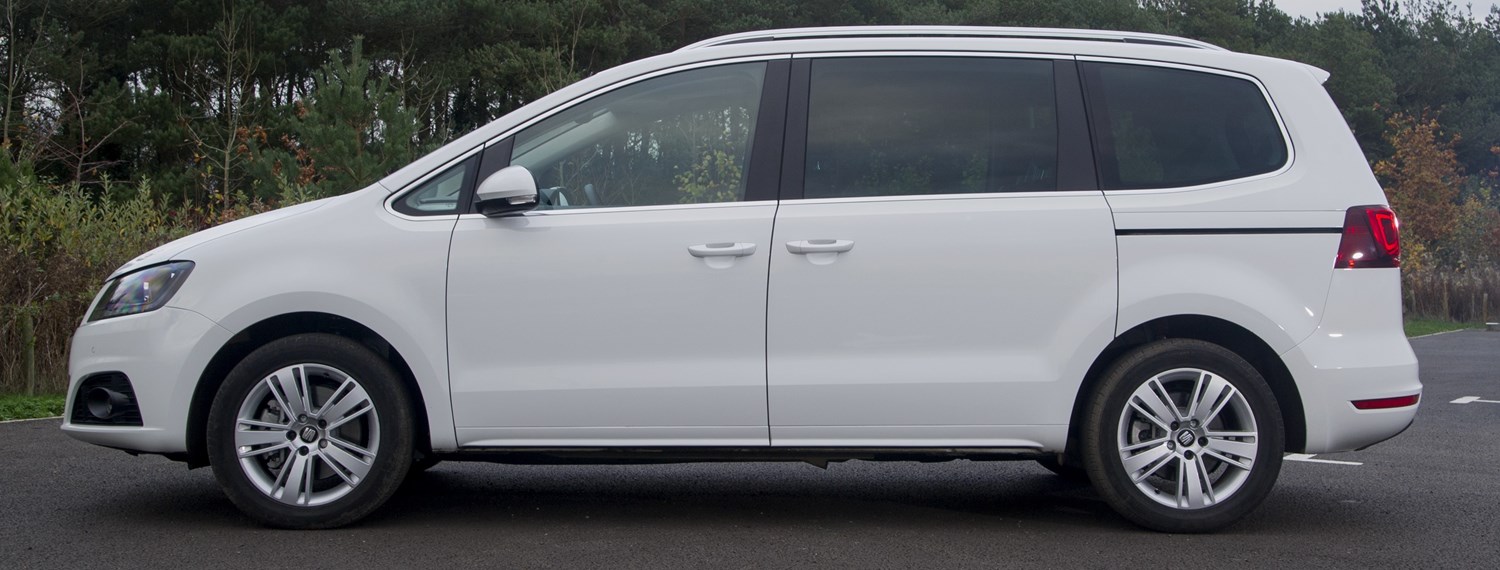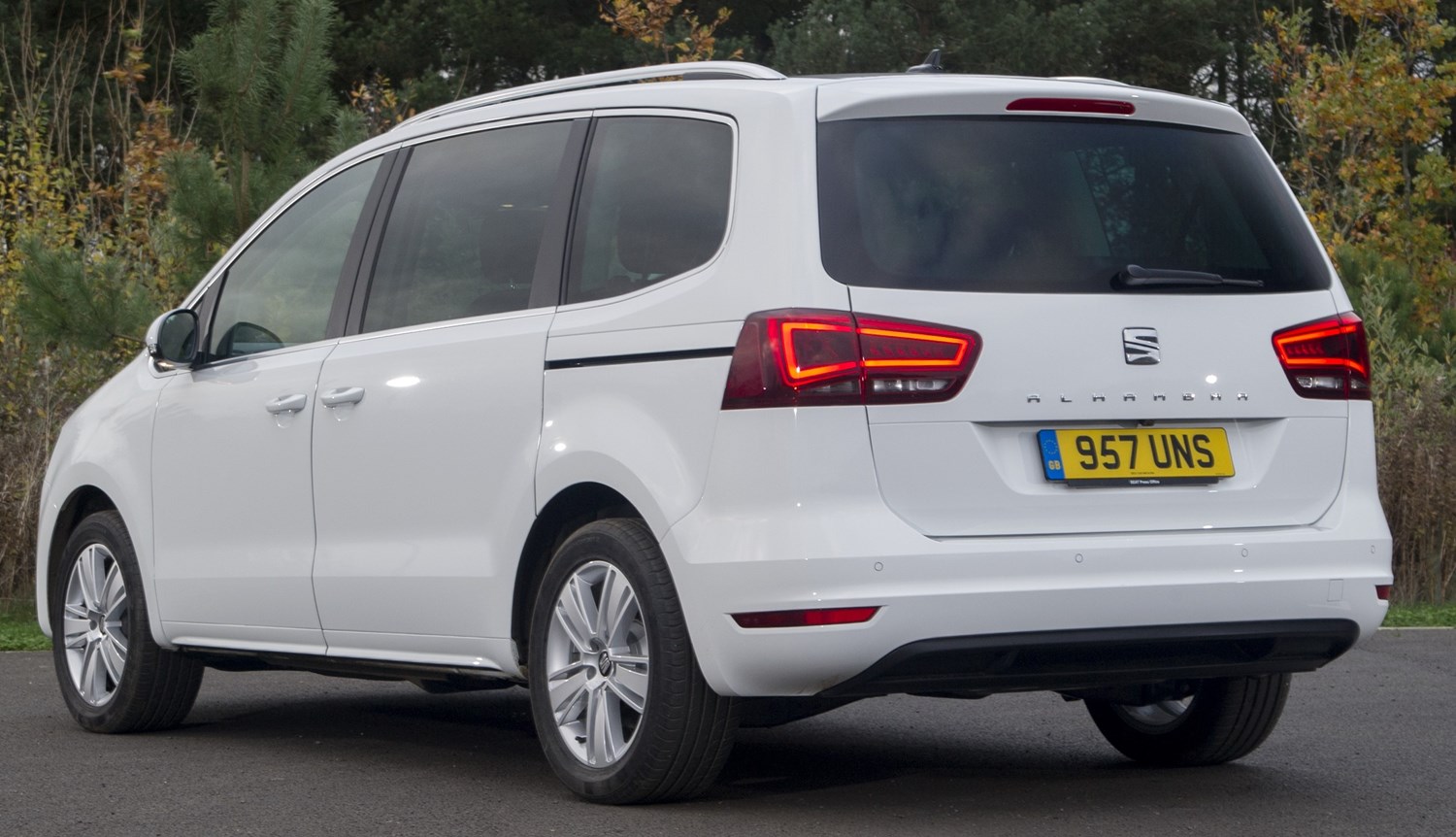Model Review
Introduced in 1996, the Alhambra is named after a famous palace in Granada, southern Spain, and we’re assuming that name was seen to mirror the model’s interior space and capacious nature, which Seat nailed on release.
The first generation was built on the same platform as the Volkswagen Sharan and Ford’s Galaxy and all three offered similar space and engines, but to be as competitive as possible, Seat fitted more features as standard for roughly the same starting price as the Ford and the VW.
After Ford departed the venture in 2006, VW updated its Sharan accordingly, but Seat kept the same design for the Alhambra since its update in 2000 and didn’t release the second generation model until 2010 – where it gained a fresh design and a new range of engines.
Built on the same platform as the Sharan, the Alhambra and its VW sibling come with a large amount of space and, instead of conventional doors, sliding electric doors are used for easier access into the rear section. The model was updated in 2015 with a refreshed look.
Latest Model
Having been updated in 2015, the Alhambra has a good range of technologies and features for the modern driver, such as driver assistance systems and new infotainment options, and with an updated exterior design, the new version is an attractive option in the MPV market.
Widely seen as a cheaper VW Sharan, the Seat has the same proportions and seats available but has a lower starting price – although it must be noted that as the quality of the Alhambra has improved, the price has gone up as well.
Fitted with only two engine sizes, it could be said that there isn’t enough choice in that area but all the diesel options can return over 50mpg, with the Ecomotive diesel engines returning 55.4mpg.
Built to be as comfortable as possible for all seven occupants, the Alhambra has plenty of practicality if you’re taxiing people about or using the possible 2000 litres of storage space behind the front two seats.
Value for money
With a starting price of £25,435, the Alhambra is S trim with the 1.4-litre petrol engine is competitively priced when compared to its main rivals – the Volkswagen Sharan and the Ford S-Max – but what Seat has tried to do is out-equip and out-price its premium MPV rivals from the base spec.With the S line, Seat fits an infotainment system with 6.5-inch touchscreen, Bluetooth, front and rear parking sensors with
With the S line, Seat fits an infotainment system with 6.5-inch touchscreen, Bluetooth, front and rear parking sensors with on-screen view, start/stop system, emergency brake assist, tiredness recognition system and multi-collision braking system, as well as multiple storage solutions and three-zone climate control.
Although it isn’t the most expensive market, the starting price can still appear pretty steep, so what does the used market have to offer?
Well, high spec models in pre-facelift guise are available for prices around £23,500, with one such example coming in SE Lux trim. Fitted with leather seats in all three rows, parking assist camera, daytime running lights, USB/AUX/Bluetooth connectivity, multi-function steering wheel, automatic DSG gearbox and efficient 2.0-litre diesel engine, good examples of used Alhambras are available.
They provide exactly the same practicality options as the newest model and if the latest in infotainment technology is not a must-need item for you then pre-owned examples can be just the pick for you.
Looks and image
Let’s be honest, if you’re on the market for an MPV looks aren’t the first thing that you are looking for, as practicality is clearly your priority. But that doesn’t mean MPV have to be ugly and Seat has done a decent job with the Alhambra.
It won’t set design fanatics’ hearts racing but it does a good job for what it is. The interior look is very VW Group, with the common and well-thought out layout doing its ever-functional best. Again, however, the look is a bit bland and won’t set the world alight.
As with any tall car, body roll comes into the model’s performance but thanks to a well-tuned suspension setup, that is kept to a minimum. It isn’t the most MPV to drive – that goes to the Ford S-Max – but that isn’t the Alhambra’s forte.
Comfort, good steering feel and secure stance on the road help to make this model a good option for families looking for a solid run-around. Also coming with a high seating position for a good view of the road, electronic stability control and well-suited alloys at lower trim levels, the Alhambra does a good job against most of its rivals.
You would think that for a seven-seater, the rearmost seats will be quite cramped, but Seat has done a good job here and the second row of seats can be moved forwards to accommodate for taller people in the two back seats.
All seats are comfortable over longer journeys and tall people will be happy in any of the seven seats due to good leg and head space. With either cloth or leather coverings, the seats are supportive throughout, especially for the front two passengers.
Space and practicality
One thing you won’t be wanting with the Alhambra is extra space because there is just so much of it. With all seats in the upright position you have 267 litres of boot space, which is just short of the Ford Galaxy, but after that few can match the Alhambra. When the rear seats are flattened you get 1,167 litres of space and then when the middle set is folded down the Seat offers 2,297 litres – which is possibly more space than you will ever need.
With a comparatively low boot lip to aid loading, you can utilise the space with a load area up to 2.95 metres long.
Although the model’s Euro NCAP safety rating has expired, it achieved a five-star rating when it was tested in 2010 as a VW Sharan – due to the similarities between the two – and since safety systems have been added to improve the security of the model since, the Alhambra can be trusted as a safe vehicle.
With a 96 per cent adult occupant rating and an 80 per cent child occupant result, families will be happy to see that it can perform in the extreme circumstances.
As quite a wide car, Seat’s choice to fit sliding doors rather than the conventional hinged has worked in the Alhambra’s favour as it makes getting into the rear much easier in tight spaces.
With the wide opening, passengers have easy access to all five seats and with a simple mechanism to pull down the middle row getting into the back is no trouble. People may struggle with the manual mechanism, so Seat can fit an automatic release that makes getting in and out even easier.
Engines
The Alhambra does only come with two engines – a 1.4-litre petrol and a 2.0-litre diesel – which may not be great for choice, but they both have positives that can make your decision a bit trickier than you would think. The petrol option is fitted in the S and SE trims and it comes with 148bhp and is only paired with a six-speed manual gearbox. It provides better refinement but doesn’t have the torque like the diesel options.
The 2.0-litre diesel comes in 148bhp and 181bhp guises, and both will provide the torque from low down for pulling and carrying six passengers. However, engine noise creeps into the cabin and it isn’t as smooth as the petrol engine with performance. They are both more efficient though and for long range driving the much smarter choices.
Running costs
Although it may not be the most efficient in its class, the Alhambra still does a good job of keeping running costs from spiralling out of control. With all diesel options coming with either manual or automatic DSG gearboxes, they can all achieve at least 50mpg, with the petrol returning an admirable 43.5mpg at best with only the manual gearbox.
Due to the higher CO2 emissions due to the size of the vehicle, road tax is in excess of £135 per year for all models, with the top petrol options coming back with costs in the region of £220. Insurance groups are quite close together will most fitting in between groups 18 and 20, with only the top spec diesels coming in group 23.
Things to look out for
Probably due to Seat being run by VW Group, reliability of the Alhambra has been superb and it has not suffered any major recalls throughout its life on the road. The significant recall of the model’s lifespan was at the end of the 1990s where the brake reservoir cap needed to be replaced to prevent water leaking into the brake fluid, but more likely than not this problem would have been sorted quickly. Since then, the Alhambra has had a near faultless record and can be a reliable option in the MPV sector.
Rivals
The MPV sector is shrinking as more families move towards the more stylish crossover and SUV segment, but that makes the MPV market even more cutthroat. Chassis rival, the VW Sharan, is clear competition for Seat and Ford’s Galaxy and S-Max are also both clearly in the Alhambra’s eye-line.
Vauxhall’s Zafira Tourer and the Citroen C4 and Grand C4 Picassos are also challengers for the Alhambra, although three aren’t as refined or as good to drive. The Fords are the most likely to be the Alhambra’s aim to beat, but due to the better equipment at a lower price the Seat should always be considered.
Depreciation warning
The Alhambra performs unremarkably in the value stakes, as its sell-on price does drop quite quickly over a three-year span. Due to the ever-present need for tech and low running costs in the used market, higher spec diesel models that will still return good fuel efficiency will perform the best, but even so a drop in value by at 55 per cent can be expected.





